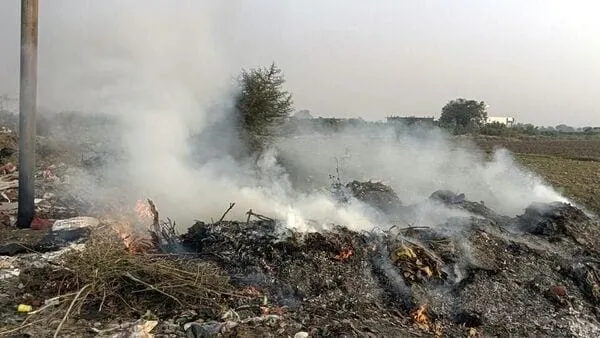Published 17 Nov 2025
No Respite for Delhi, Noida and Gurugram as AQI Remains ‘Severe’ – How Long Will Residents Have to Endure Toxic Air?
Air quality in Delhi, Noida, and Gurugram remains in the “severe” category, triggering health alerts and pollution measures. With little relief in sight, residents face weeks of toxic air.

Introduction
Delhi, Noida, Gurugram — The air quality across the National Capital Region (NCR) continues to deteriorate, with Delhi, Noida, and Gurugram all stuck in the “severe” pollution zone. Residents are facing another bout of hazardous air, raising urgent questions: how long will this toxic spell last, and what can people do to protect themselves?
AQI Crisis Deepens
Recent data shows that the Air Quality Index (AQI) in parts of Noida has jumped close to 400, while Greater Noida has crossed the 400 mark in several monitoring stations. In Delhi, many stations are reporting AQI values that consistently remain near or above the “severe” threshold. Meanwhile, Gurugram’s levels are also dangerously high, with some areas recording very unhealthy air.
What’s Causing It
Experts point to a combination of factors. Crop stubble burning in neighbouring states, vehicle emissions, construction dust, and cold, calm weather are all contributing to the smog. The lack of strong winds makes it difficult for pollutants to disperse, trapping harmful particles in the air over the NCR region.
When Might Relief Come?
Weather forecasts offer little immediate hope. Current wind patterns are weak, making it hard to clear the polluted air. Forecasters suggest that more favourable winds may return in a few days, which could help disperse pollutants. But until then, the air quality is likely to remain dangerously poor.
Meteorologists also warn that colder nights will continue to trap pollutants close to the ground, preventing dispersion and worsening the smog condition.
Health Impact on Residents
Doctors and health experts are raising alarms. Prolonged exposure to high levels of PM2.5 and PM10 is causing serious health issues. People are reporting constant fatigue, headaches, sore throats, and difficulty breathing. For vulnerable groups — children, the elderly, and those with respiratory problems — the risk is especially severe.
One pulmonologist explains that when the air is so polluted, the body struggles to get enough oxygen. Breathing feels like a chore, and every breath takes a toll on organs. Over time, this can contribute to chronic health problems.
What Authorities Are Doing
Authorities have activated tougher pollution control measures under the Graded Response Action Plan (GRAP). These include restricting non-essential construction, limiting certain types of industrial activity, and enforcing stricter rules on vehicle emissions. The aim is to reduce immediate sources of pollution and prevent further deterioration.
In Noida, civil authorities have deployed anti-smog guns and street sweepers to try to cut down dust and particulate matter locally.
How Long Will This Last?
Experts warn that the current “severe” pollution phase could persist for several days — potentially a week or more — unless there is a significant change in weather. If wind picks up and temperatures rise, there may be some relief. But even then, it will take time for the air to clear.
For now, the situation calls for constant vigilance. Residents are being urged to check real-time AQI updates, avoid outdoor activities especially during peak pollution hours, and use masks or air purifiers if possible.
Advice for People Living Here
- Limit outdoor exposure, especially for children, elderly, and those with asthma or breathing issues.
- Wear N95 or similar masks when stepping out.
- Keep windows closed during early morning and night when pollution peaks.
- Use air purifiers at home or in enclosed spaces.
- Stay hydrated and avoid strenuous outdoor exercise.
Conclusion
This is not just a seasonal problem — it’s a recurring crisis that feels more intense every year. The fact that the pollution remains “severe” even on relatively calm days shows how deeply entrenched the issue is. Until systemic change happens — better regulation, cleaner fuel, and greater accountability — residents are going to be stuck in this toxic loop.

Dr Sudheer Pandey
94% of readers found this post helpful
0 Votes
Click a star to add vote